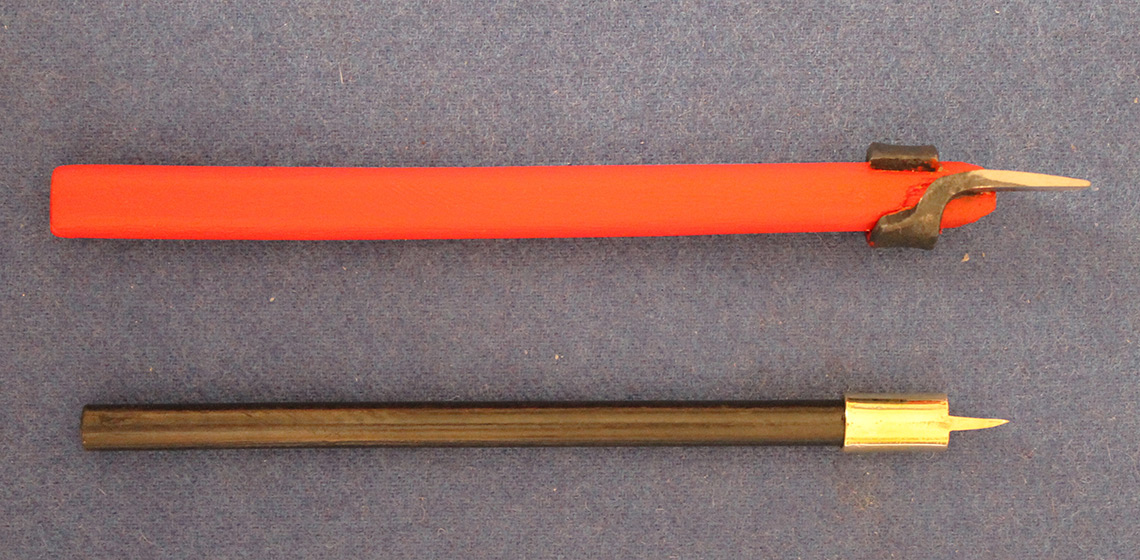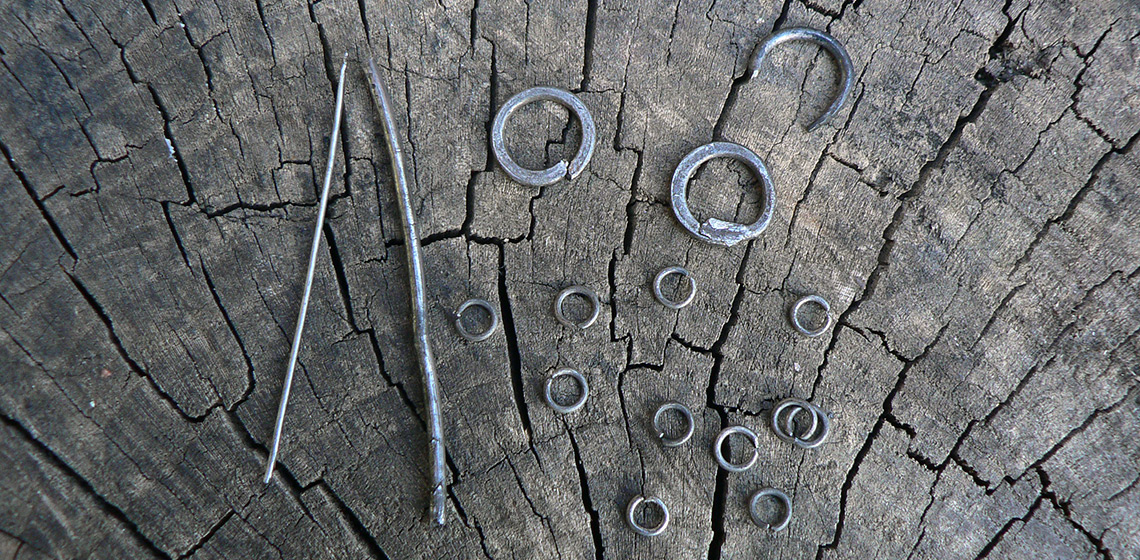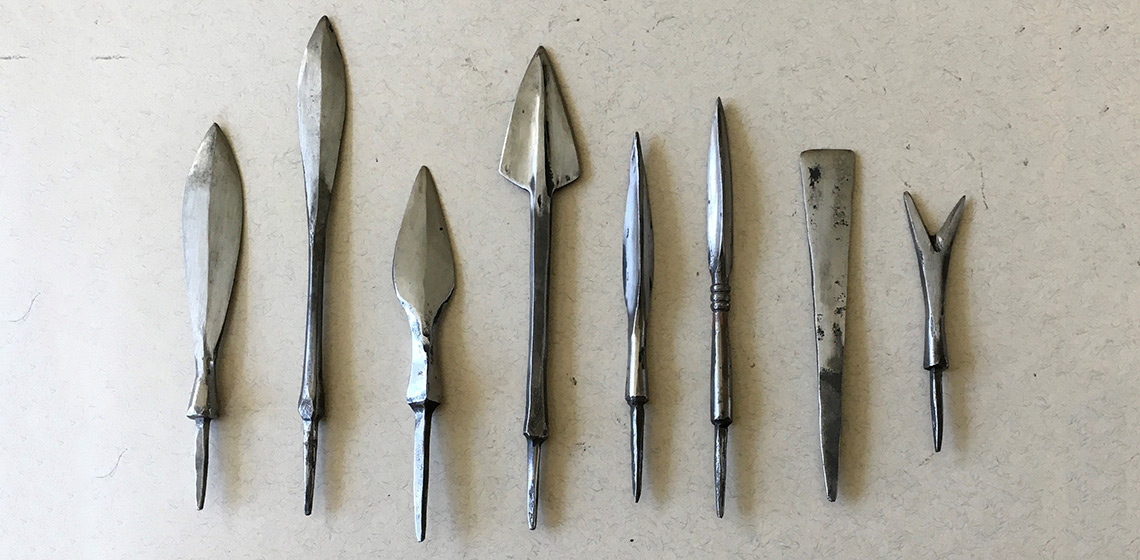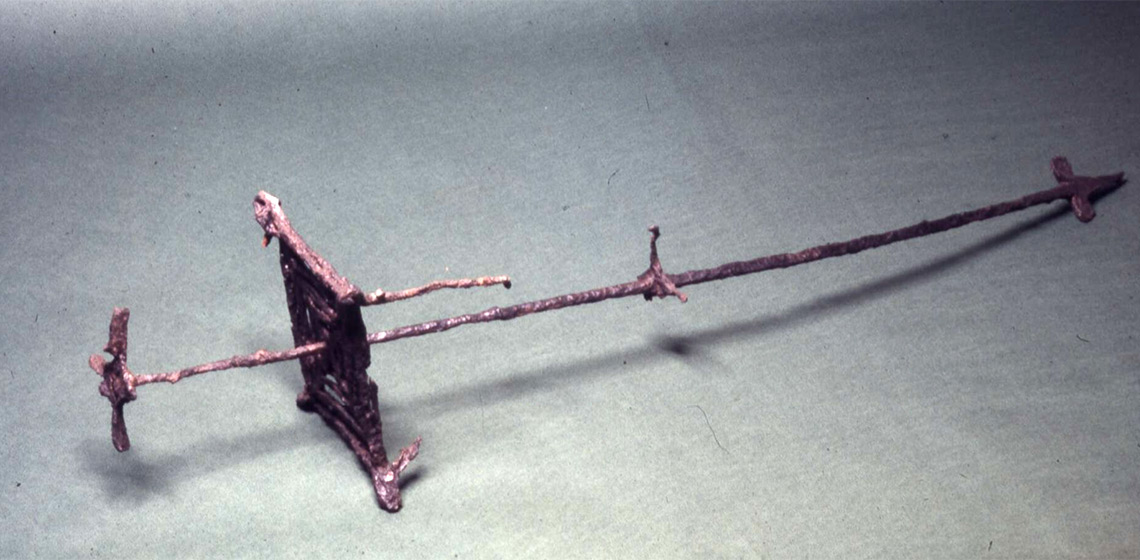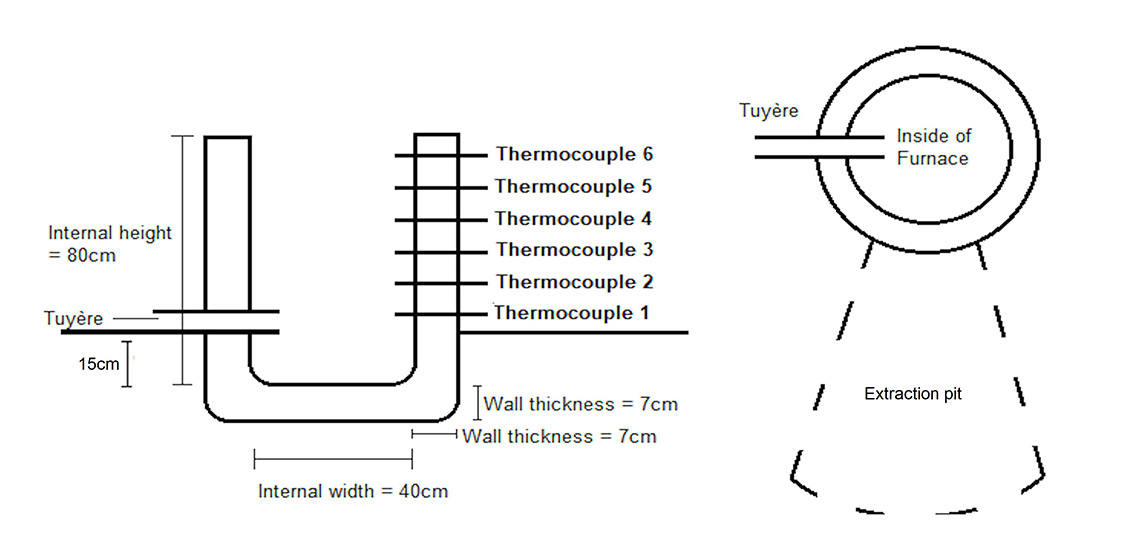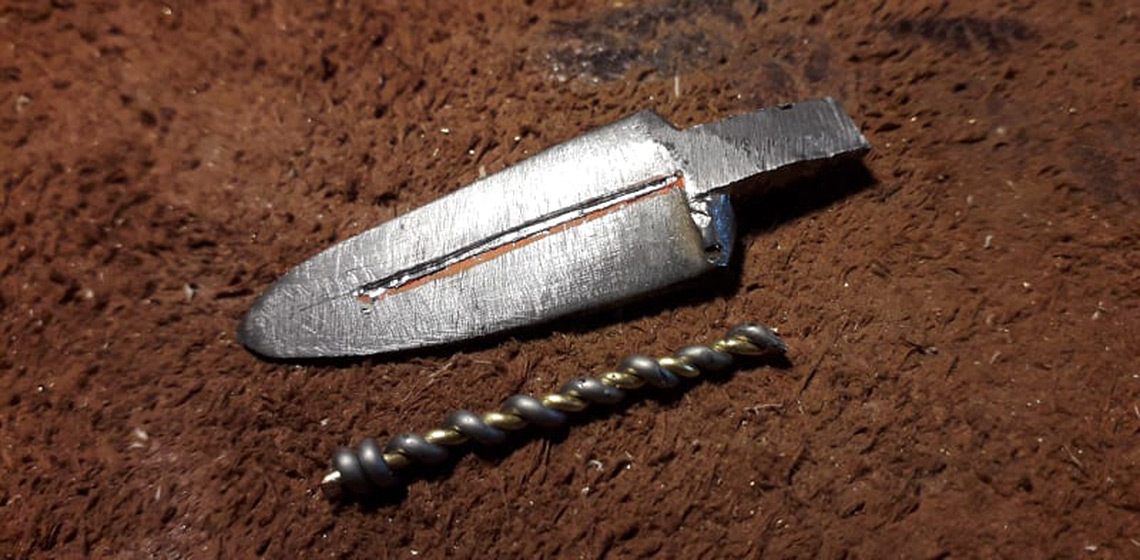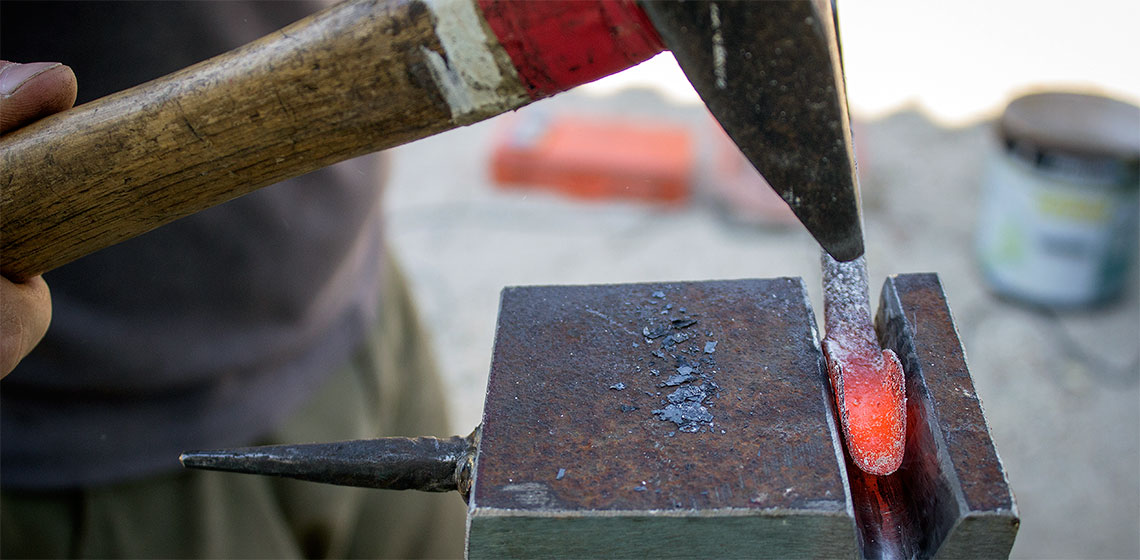iron
The Making of Roman Metal Ink Pen Nibs
Publication Date
Roman ink pen nibs have been made from different materials such as bone, horn, reed, iron, and copper alloys. This article deals with experiments to reproduce Roman ink pen nibs made from copper alloy and iron.
Drawing Wire
Publication Date
Very few experiments have been conducted on drawing wires of iron made from bog ore. One of them, however, was carried out at the forge at Lejre Land of Legends in Denmark. The iron used for the experiments was obtained from three different sites in Denmark where well-documented experiments in the extraction of bog iron ore took place...
Scandinavian Arrowheads of the Viking Age, Their Manufacture and Distribution
Publication Date
In recent years there has been a renewed interest in the arrowheads used in the Viking Age and their distribution. The 187 excavation of Viking graves in the Black Earth of Birka region of Sweden, re-examined in 2019 by Price (Price, et al., 2019) and the finding of arrows and arrowheads where glaciers have melted in Norway, prompted my research into the forging techniques of specific arrowheads from these...
(Re)constructing an Early Medieval Irish Ard
Publication Date
This article outlines the results of an EXARC funded 2019 Twinning project exploring the production and use of an Irish early medieval ard. In this, the project partners researched the evidence for early ploughs and ards, made bloomery iron, produced an ard share, and worked wood to form the frame of the ard. This paper also includes...
The Little Bowl That Could! Experimental Iron Smelting in a Bowl Furnace
Publication Date
The bowl furnace has been a somewhat neglected topic in the early history of iron making, often overshadowed in experimental work by the shaft furnace. This assessment attempts to re-evaluate the position of the bowl furnace in early iron-making - firstly by looking at how it is regarded in scholarly literature, and secondly, through an experimental reconstruction programme...
A Proposed New Appearance of the Iron Stand from Sutton Hoo, Based on Existing Material
Publication Date
The Iron Stand from Sutton Hoo, Mound 1 was excavated in 1939. While a first tentative interpretation of its original appearance was made in 1952, this was updated in 1972 following a science-led investigation of the artefact. However, some features of the object were not included in the later representation...
Standardized Reporting of Experimental Iron Smelting - A modest (?) Proposal
Publication Date
The development of effective bloomery iron smelting has progressed over the past decades from the first repeated experiments into documented, effective, methods. This progression has primarily been the work of often isolated individuals, many with great practical experience as artisans, but most often with little formal academic training...
Smelting Conditions and Smelting Products: Experimental Insights into the Development of Iron Bloomery Furnaces
Publication Date
The material record for bloomery furnaces in Iron Age and Roman Britain is fragmentary and, because of this paucity of evidence, the reconstruction of the ceramic structures used in iron production is difficult. Experiments have nevertheless been carried out to ...
Replica of the Knife 2165 found in Flixborough a Late Anglo-Saxon Period Knife with an Inlay of Twisted Bronze and Silver Wires
Publication Date
This work aims to show the reconstruction of a medieval era knife that was found in Flixborough, Lincolnshire (UK). Flixborough’s Anglo-Saxon cemetery has returned a total of 11 knives that can be dated between the 8th and the 10th century AD. The specimen discussed here is known as Knife 2165 and was found in context 3417 of the site. This knife is the smallest of the inlaid knives found in Flixborough...
Experimental Analysis of Metal Points from Quattro Macine: Reproduction and Interpretation
Publication Date
This paper relates to a study of experimental archaeology, executed by Ruben Cataldo, about the forging methods used to produce some replicas of two metal points found during the archaeological excavations carried out between 1992 and 1996 by the University of Salento in the medieval village Quattro Macine (translated Four Millstones), located in the municipality of Giuggianello, a small town in...

